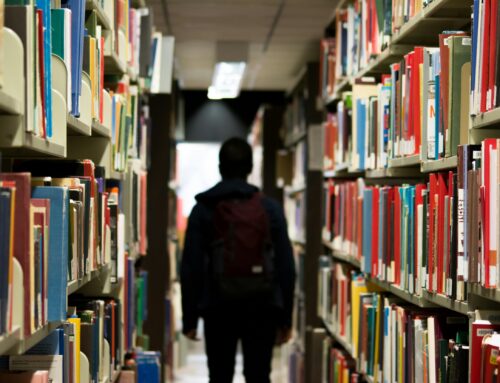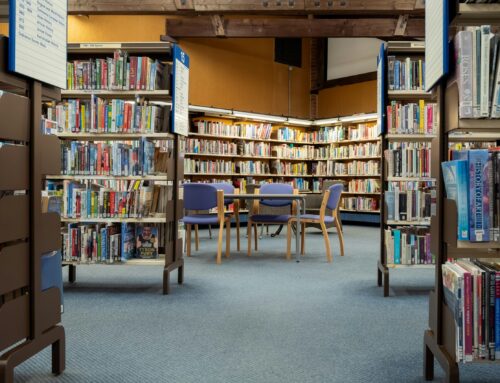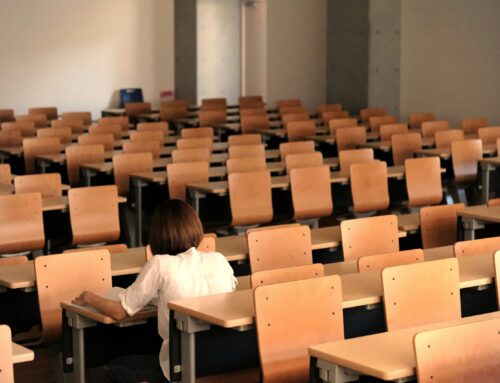 Introduction
Introduction
As artificial intelligence (AI) makes its impact around the world and continues to improve every day, there’s no denying that it will find its way into the classroom in some shape or form. Many educators are trying to embrace and utilize AI in some ways rather than banning it completely and ignoring its potential positive uses for students. So how is it being integrated into education and learning?
After experiencing the COVID-19 pandemic, educators are now choosing to embrace digital learning tools of all kinds more than ever before, according to the Harvard Graduate School of Education (HGSE).[1] Students are growing up with access to technology and gaining technological and media literacy at a young age. Educators who are incorporating AI in the classroom are using it as a benefit for teachers rather than a tool for students. Many argue that AI will never replace teachers—particularly when addressing the needs of students with disabilities and in minority groups.
AI technologies are being used in the classroom as tools and resources. Teachers are including it in lesson plans, teaching their students how to properly use it and when, and students are using it to further their understanding in some topics. Some students and teachers are pro-AI, and others are anti-AI, so what are some pros and cons of incorporating it into the classroom?
Pros of AI in the Classroom
Using AI in the classroom comes with many pros that impact not only the students but also teachers. As one student pointed out, cheating in school has always been an issue, even before we had AI. AI didn’t create cheating; it’s just another tool that could be used the wrong way. But, if teachers encourage students to use AI as a helpful tool instead, it could boost their learning by making them curious and prompting them to ask questions on their own. Asking questions and generating new ideas from these questions can spark new topics, promote critical thinking, and teach them that there are ways to think without using technology.[2]
Another way of using AI to help students is to use it for art forms and to inspire various forms of creativity. Students can use AI in art classes and in creative literature projects to find new topics, encouraging them to think outside the box. With these new technologies in place, educators are advocating for alternative teaching styles and exploring new ways to challenge students. Not only can AI allow students to think of new ways to learn and explore, but it also allows teachers to do the same while working to incorporate technology into their classrooms.
Cons of AI in the Classroom
One con of incorporating AI in schools is the lack of the human element. AI technologies are unable to understand disabilities–whether mental, learning, or physical–that exist within the student population. AI also can’t understand the importance of minorities and the diverse population of a classroom.[3] Identity is a big part of understanding respect within the classroom, and acknowledgement of these identities is something AI technologies can’t always do, and if they can, it’s mostly an afterthought.
Another con surrounding the use of AI technology in classrooms is that it makes cheating more accessible. When students are tired and overloaded with work, the availability of AI can be tempting for many. With approaching deadlines and consistent burnout, many students could turn to AI as a quicker, more convenient option than going through the tiresome process of research essays and other assignments. A result of this decision is potential plagiarism, which is a form of cheating. There have been many discussions surrounding safeguards to identify and limit the result of AI plagiarism in the classroom to encourage academic integrity. Tools such as Turnitin are being used more frequently to spot and stop plagiarism caused by AI. Another direction some are taking is to encourage use of AI tools to assist with research and outlines, rather than to allow AI to complete the work entirely for the student.
Publishing Solutions Group
Publishing Solutions Group (PSG) supports the creation of existing and new content in multiple languages no matter the delivery method. When it comes to technology, PSG remains committed to being fully aware of the latest advances to ensure we can support our clients in delivering award-winning content for the classroom. For over 20 years, we have helped our clients create powerful content for books and digital platforms with our committed staff and our team of production managers, translators, and social media experts.
[1] https://www.thecrimson.com/article/2023/9/7/hgse-ai-education/
[2] https://www.gse.harvard.edu/ideas/usable-knowledge/23/07/embracing-artificial-intelligence-classroom.
[3] https://www.thecrimson.com/article/2023/9/7/hgse-ai-education/




